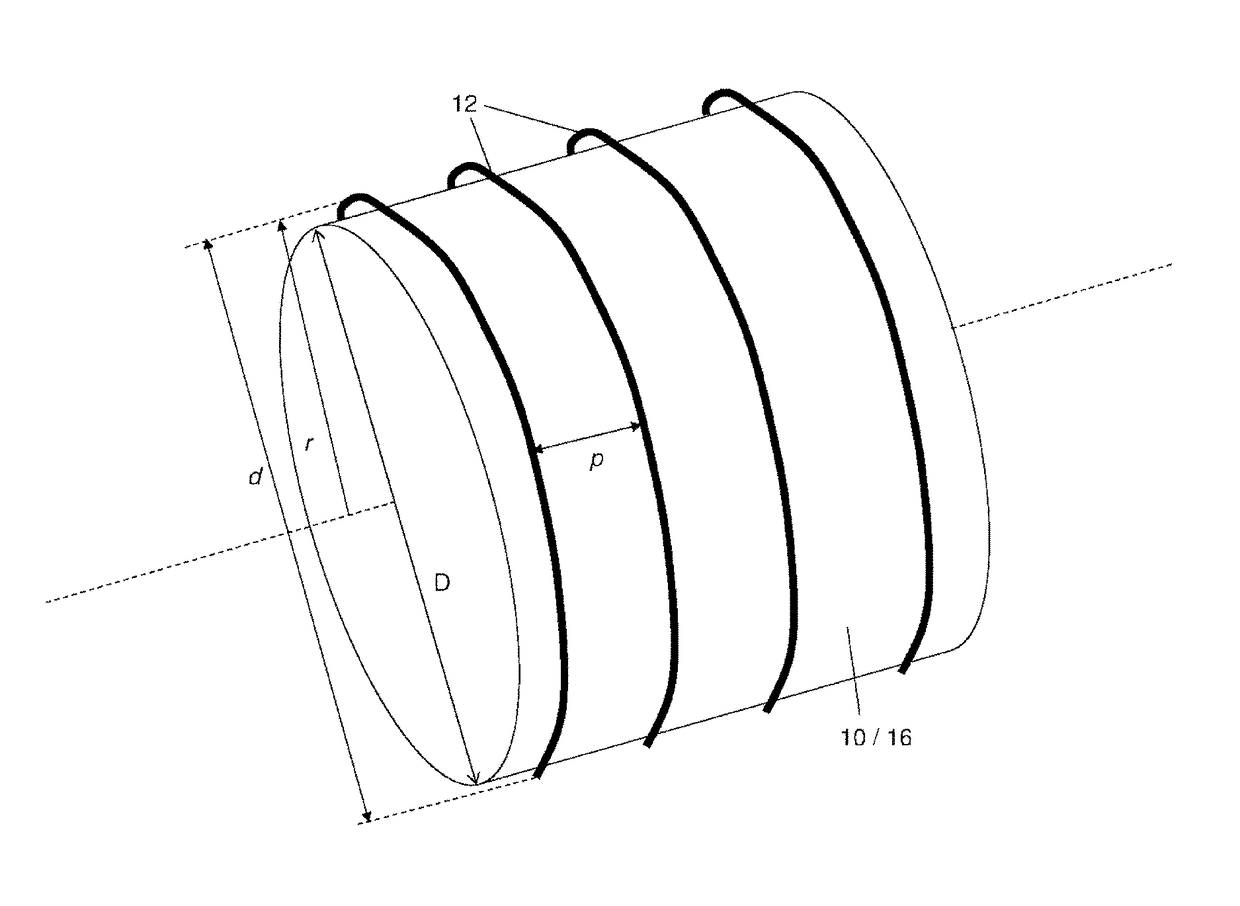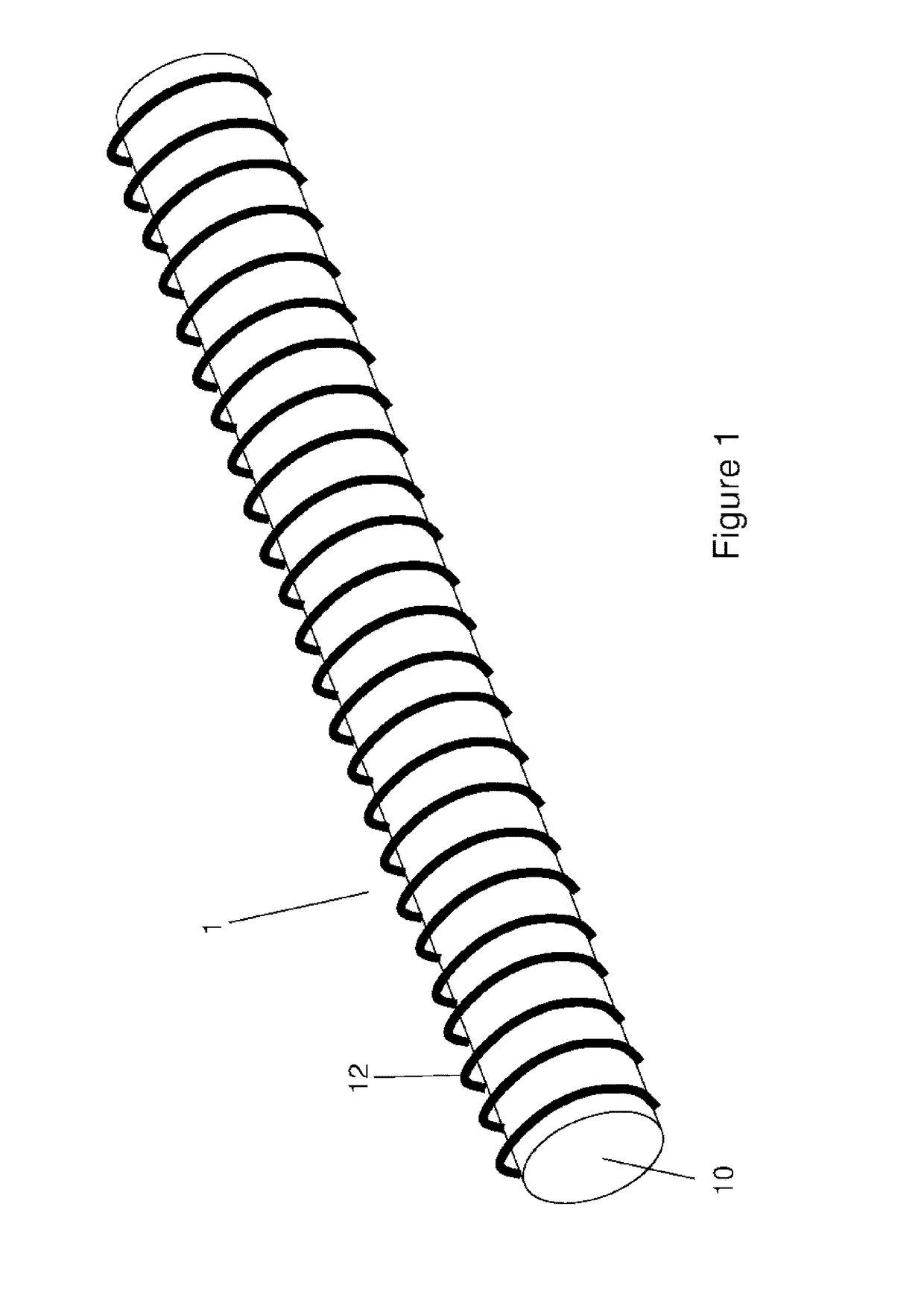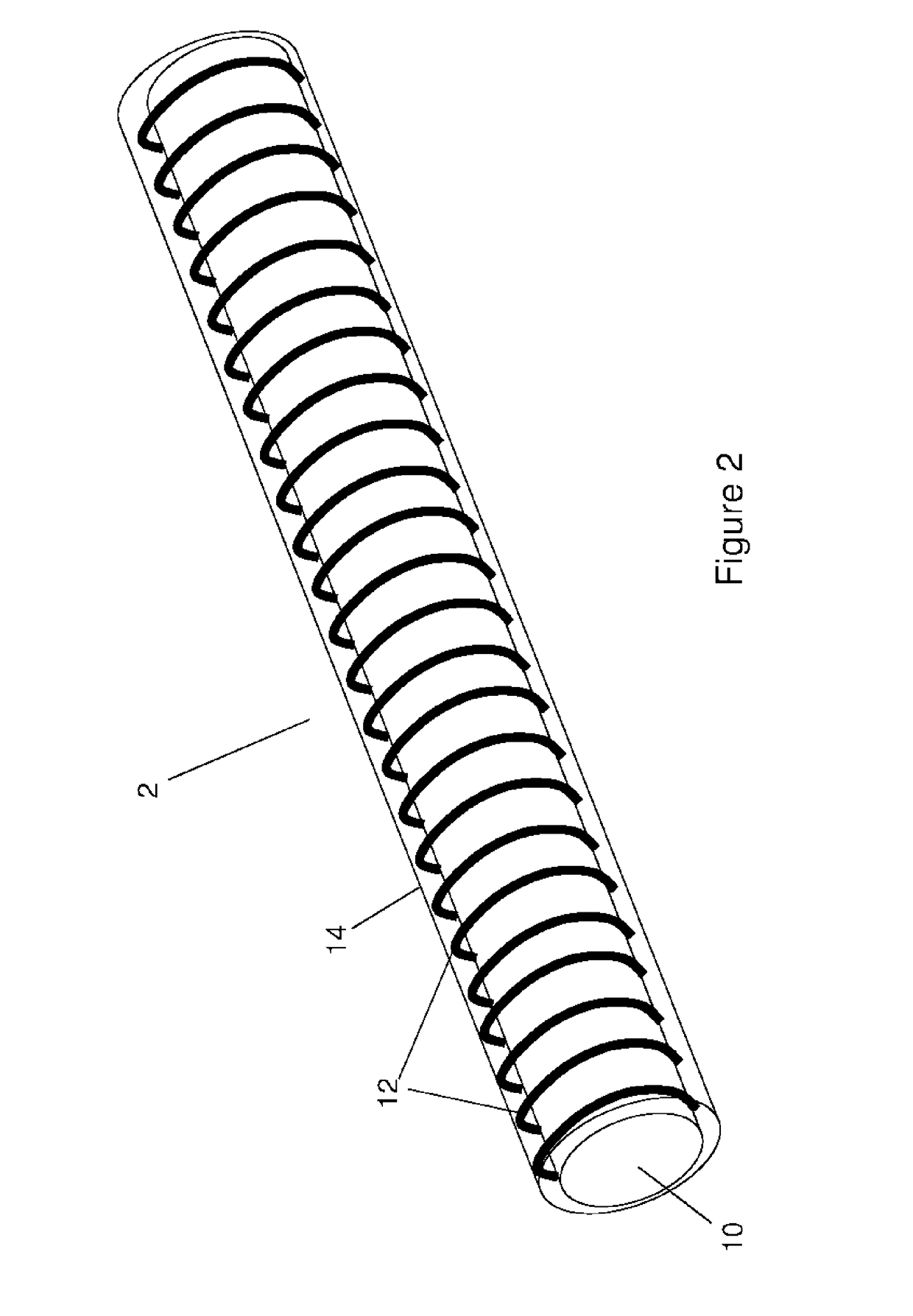Optical fiber cable
a fiber optic cable and optical fiber technology, applied in the field of optical fiber cables, can solve the problems of prohibitively expensive, physical winding of the fiber around the object to be monitored, and may not be possible, and achieve the effects of low bending loss, good performance, and high longitudinal sensing resolution of the resulting cabl
- Summary
- Abstract
- Description
- Claims
- Application Information
AI Technical Summary
Benefits of technology
Problems solved by technology
Method used
Image
Examples
example 1
[0068]Cable core, d=10 mm, r=5 mm[0069]Fibre, d=3 mm, r=1.5 mm, 1000 turns[0070]Total Radius=6.5 mm[0071]Pitch=3 mm[0072]θ=0.07332 radians[0073]L=40,950.7 mm=40.95 m[0074]=>˜8 sensing points, sensing point every ˜122 turns[0075]Longitudinal Sensing Resolution ˜36.63 cm
example 2
[0076]Cable core, d=50 mm, r=25 mm[0077]Fibre, d=3 mm, r=1.5 mm, 1000 turns[0078]Total Radius=26.5 mm[0079]Pitch=3 mm[0080]θ=0.01802 radians[0081]L=166,531.4 mm=166.5 m[0082]=>˜33 sensing points, sensing point every ˜30 turns[0083]Longitudinal Sensing Resolution ˜9.00 cm
example 3
[0084]Cable core, d=150 mm, r=75 mm[0085]Fibre, d=3 mm, r=1.5 mm, 1000 turns[0086]Total Radius=76.5 mm[0087]Pitch=3 mm[0088]θ=0.00624 radians[0089]L=480,673.04 mm=480.7 m[0090]=>˜96 sensing points, sensing point every ˜10 turns[0091]Longitudinal Sensing Resolution ˜3.12 cm
PUM
 Login to View More
Login to View More Abstract
Description
Claims
Application Information
 Login to View More
Login to View More - R&D
- Intellectual Property
- Life Sciences
- Materials
- Tech Scout
- Unparalleled Data Quality
- Higher Quality Content
- 60% Fewer Hallucinations
Browse by: Latest US Patents, China's latest patents, Technical Efficacy Thesaurus, Application Domain, Technology Topic, Popular Technical Reports.
© 2025 PatSnap. All rights reserved.Legal|Privacy policy|Modern Slavery Act Transparency Statement|Sitemap|About US| Contact US: help@patsnap.com



